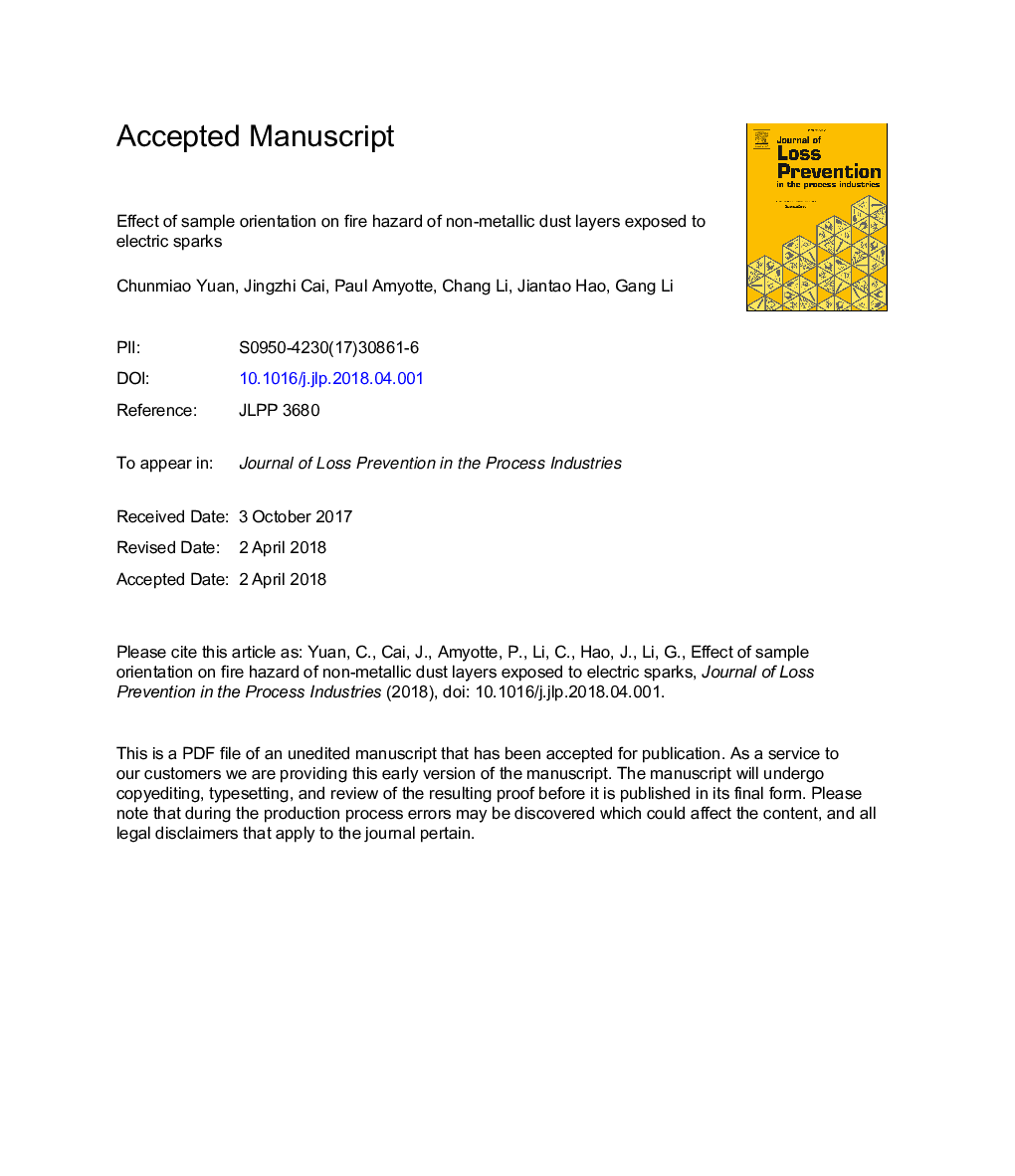| Article ID | Journal | Published Year | Pages | File Type |
|---|---|---|---|---|
| 6972883 | Journal of Loss Prevention in the Process Industries | 2018 | 22 Pages |
Abstract
Surface flames are far stronger as dust explosion ignition sources than smoldering agglomerates, but surface fire seldom occurs with horizontally deposited non-metallic dust layers. In this paper, the effects of sample orientation on the fire hazard of four non-metallic dust layers were investigated using electric spark ignition. Layer surface inclination angle significantly influenced layer ignition sensitivity and fire hazard. For PMMA dust layers, flame spread velocity (FSV) reached 2.6â¯mm/s from 0.8â¯mm/s when the inclination angle was increased from 0° to 50°, while in wood dust layers, sustainable propagating combustion occurred when the inclination angle was increased to 40°. Also, the maximum temperature and FSV of surface fire in wood dust layers were far greater than these of smoldering fires, indicating a greater fire hazard for surface fire. Angle of inclination of combustible powder deposits should be considered when assessing fire and explosion hazard in real process industry situations.
Keywords
Related Topics
Physical Sciences and Engineering
Chemical Engineering
Chemical Health and Safety
Authors
Chunmiao Yuan, Jingzhi Cai, Paul Amyotte, Chang Li, Jiantao Hao, Gang Li,
